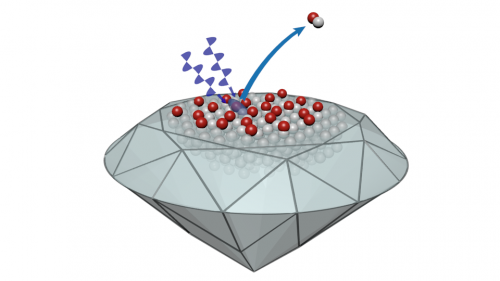Super-resolution laser machining possible

A newly discovered natural phenomenon shows that light could be used to pick apart a substance atom by atom, with new avenues for nano-scale diamond devices, as identified this week by Australian researchers in Nature Communications.
"Lasers are known to be very precise at cutting and drilling materials on a small scale – less than the width of a human hair, in fact – but on the atomic scale they have notoriously poor resolution," says lead researcher Associate Professor Richard Mildren.
"If we can harness lasers at higher resolutions, the opportunities at the atomic level are tremendous, especially for future nano-scale devices in data storage, quantum computers, nano-sensors and high-power on-chip lasers."
Current lasers separate materials through super heating of the surface at the focus of the laser beam. Although it has been in widespread use in industries such as in car manufacturing, this technology has severe limitations especially when looking to address cutting edge fabrication challenges in nano-devices.
Through their research, Mildren and Macquarie University colleagues Andrew Lehmann and Carlo Bradac have now discovered that it is possible to remove atoms from a surface, using ultraviolet lasers, and confining the interaction to the atomic scale. The phenomenon is found to completely avoid the heat generation problem that has previously restricted the ability to make very small precise cuts.
"So far we have used the technique to demonstrate structures in diamond of size about 20 nanometers, which is the size of large molecules," says Mildren.
"However, the technique looks highly promising for doing much better, enabling manipulation of surfaces with the ultimate single atom precision, or more than a ten thousand times smaller than that possible by standard laser machining techniques."
More information: "Two-photon polarization-selective etching of emergent nano-structures on diamond surfaces," Nature Communications, 4 March 2014, A. Lehmann, C. Bradac and R.P. Mildren, DOI: 10.1038/ncomms4341
Journal information: Nature Communications
Provided by Macquarie University





















